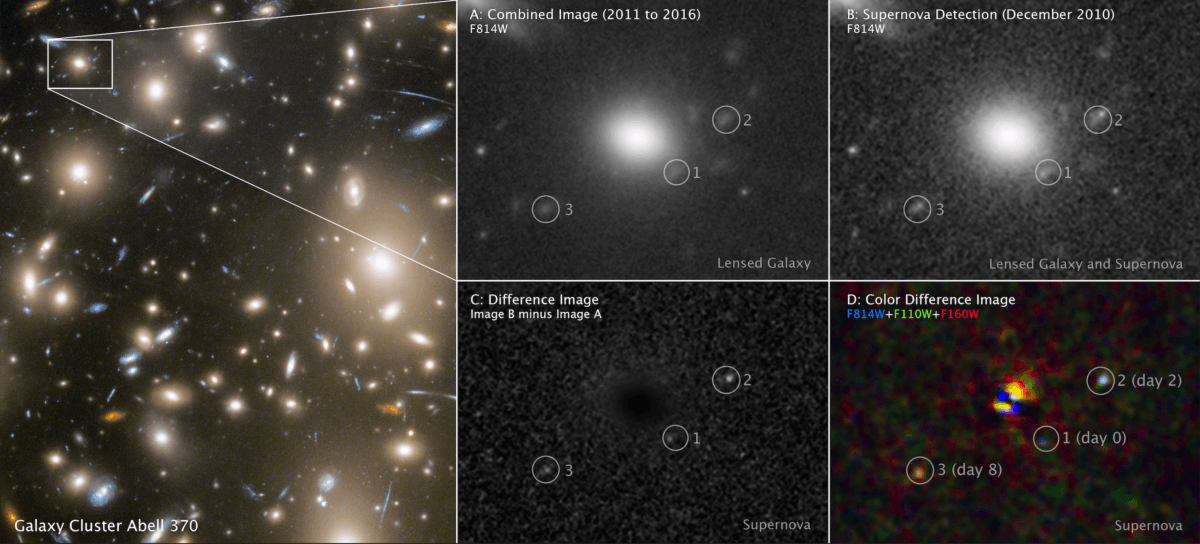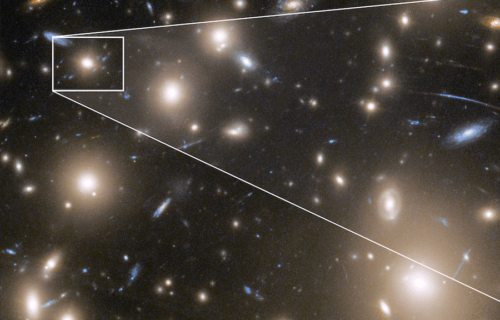MINNEAPOLIS — Astronomers are viewing the stars from a past universe in real time. New research from the University of Minnesota has successfully measured the size of a star more than 11 billion years ago — about 2 billion years after the Big Bang. Images of the red-supergiant supernova can tell us about what early universes looked like and what we should expect for the future.
“This is the first detailed look at a supernova at a much earlier epoch of the Universe’s evolution,” says Patrick Kelly, a lead author of the paper and an associate professor at the University of Minnesota School of Physics and Astronomy, in a release. “It’s very exciting because we can learn in detail about an individual star when the Universe was less than a fifth of its current age, and begin to understand if the stars that existed many billions of years ago are different from the ones nearby.”
The Hubble Space Telescope took pictures of the exploding red supergiant and the research team used a technique called gravitational lensing to view it in greater detail. This is when mass bends light. In other words, the mass in the galaxy acts like a magnifying glass to get a closer view of starlight.
“Here, we see three images,” Kelly says of the snapshots below. “Even though they can be seen at the same time, they show the supernova as it was at different ages separated by several days. We see the supernova rapidly cooling, which allows us to basically reconstruct what happened and study how the supernova cooled in its first few days with just one set of images. It enables us to see a rerun of a supernova.”

The once-exploding supernova seems to be cooling down. They also found it’s 500 times larger than our sun and is located at redshift three, about 60 times farther away than any other supernova the Hubble Telescope has captured.
The findings were in addition to one of Kelly’s 2014 supernova discovery where he estimated how many stars were exploding when the universe was a small proportion of what it is today. Their results at the time suggested there were more supernovas than scientists previously theorized.
“Core-collapse supernovae mark the deaths of massive, short-lived stars. The number of core-collapse supernovae we detect can be used to understand how many massive stars were formed in galaxies when the Universe was much younger,” says Wenlei Chen, lead author of the paper and a postdoctoral researcher in the University of Minnesota School of Physics and Astronomy.
The study is published in Nature.
